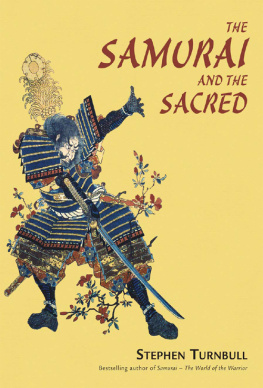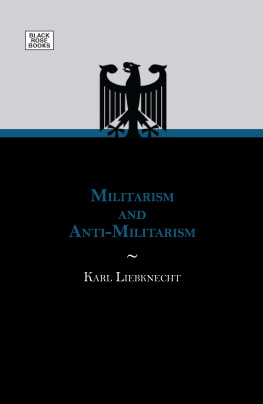CONTENTS
Guide
Brian Daizen Victoria is a fully ordained St Zen priest, having trained at Daihonzan Eiheiji in Fukui prefecture and received Dharma transmission from Asada Daisen, late abbot of Jkin temple in Saitama prefecture. He holds an M.A. in Buddhist Studies from St Zen sect-affiliated Komazawa University in Tokyo, and a Ph.D. from the Department of Religious Studies at Temple University.
In addition to his most recent book, Zen War Stories (2003), Victorias major writings include an autobiographical work in Japanese entitled Gaijin de ari, Zen bozu de ari (As a Foreigner, As a Zen Priest), published in 1971; Zen Master Dgen, coauthored with Professor Yokoi Yh of Aichi-gakuin University (1976); and a translation of The Zen Life by Sato Koji (1972).
Victoria currently serves as the director of Antioch Colleges Buddhist Studies in Japan Program.
B uddhism has a history of approximately 1,500 years in Japan, having first been introduced from Korea in the middle of the sixth century. By the Tokugawa period (16001868) Buddhism had, outwardly at least, reached the pinnacle of its power, functioning as a de facto state religion. Each and every household in the country was required to affiliate itself with a nearby Buddhist temple. The result was an explosive growth in the number of temples, from only 13,037 temples during the Kamakura period (11851333) to 469,934 during the Tokugawa.
There were, however, a number of hidden costs associated with Buddhisms establishment as a state religion. First of all, mandatory temple affiliation effectively turned a large part of the Buddhist clergy into little more than government functionaries. Concurrently, membership in a particular sect often became a matter of political obligation rather than religious conviction. These developments are hardly surprising, since the catalyst for according Buddhism a privileged position in the first place was the Tokugawa regimes determination to expel Christianity, thereby reducing the danger to Japan of being colonized by one of the Western powers. Equally important, the regime wished to insure that indigenous religious institutions, like all other institutions in society, were firmly under its control.
The government exerted control over institutional Buddhism through such policies as dividing the powerful Shin (True Pure Land) sect into two branches, popularly known as the Nishi (West) Honganji and Higashi (East) Honganji after their respective head temples. The Tokugawa regime further made sure that every temple in the land, no matter how humble, was made subservient to a higher-grade temple in pyramidal fashion, with an all-powerful central temple (honzan) controlling each sect from the top. While sectarian differences were tolerated, the central temple of each sect was made responsible, and held accountable, for the actions of all of its subordinates, both lay and clerical.
A second and perhaps higher cost that institutional Buddhism paid for government support was what Robert Bellah described as the general lethargy and uncreativeness of Buddhism in the Tokugawa period.
There were, of course, some clergy, living in richly endowed temples, who turned their energy to learning. There were also reformers and innovators who attempted with some success to revitalize their respective sects. It was all but inevitable that institutional Buddhism would face a day of reckoning.
GOVERNMENT MEASURES DIRECTED TOWARD BUDDHISM
On January 3, 1868, the young Emperor Meiji issued a proclamation announcing that he was resuming the reins of government, although in fact only very limited power had actually been restored to the throne. Nevertheless, a scant three months later, on April 6, 1868, the emperor promulgated the Charter Oath, a document consisting of five articles that clearly expressed the antifeudal aspirations of the new government. The Charter Oath states:
(1) Councils widely convoked shall be established, and all affairs of State decided by public discussion.
(2) All measures, governmental and social, shall be conducted by the united efforts of the governing and the governed.
(3) The unity of the imperial and the feudal governments shall be achieved; all the people, even the meanest, shall be given full opportunities for their aspirations and activities.
(4) All absurd usages of the old regime shall be abolished and all measures conducted in conformity with the righteous way of heaven and earth.
(5) Knowledge shall be sought from all over the world, and thus shall be promoted the imperial polity.
Though the Charter Oath was seemingly innocuous, Article 4 was a harbinger of the impending storm Buddhism would face. What, exactly, were the absurd usages of the old regime that were to be abolished?
The answer was not long in coming. Only a few days later the first of the Separation Edicts (Shimbutsu Hanzen Rei), designed to separate Buddhism from Shinto, were issued by a newly established government bureau known as the Office of Rites (Jingi Kyoku). This first edict stated that all Buddhist clerics were to be removed from Shinto shrines throughout the nation. Henceforth, only bona fide Shinto priests were to be allowed to carry out administrative duties related to shrines.
In a second edict, issued less than two weeks after the first, the use of Buddhist names for Shinto deities (kami) was prohibited. Not only that, Buddhist statuary could no longer be used to represent Shinto deities, or, for that matter, even be present in a shrine compound. Whatever the authors original intent may have been, these edicts were often interpreted at the local and regional levels as meaning that anything having to do with Buddhism could and should be destroyed.
In his excellent book on this period, Of Heretics and Martyrs in Meiji Japan, James Ketelaar points out that these separation edicts necessarily included as an integral part of their formulation a direct attack on Buddhism. This is because, first of all, nearly every member of the Office of Rites was an active proponent of National Learning (Kokugaku). This Shinto-dominated school of thought taught that while both the Japanese nation and throne were of divine origin, this origin had been obscured and sullied by foreign accretions and influences, especially those from China. Adherents of this school believed one of the first and most important jobs of the new government was to cleanse the nation of these foreign elements, Buddhism first and foremost.
Just how effective this cleansing was can be seen from statistics: over forty thousand temples were closed throughout the nation, countless temple artifacts were destroyed, and thousands of priests were forcibly laicized. Once again, however, the interpretation and enforcement of the Separation Edicts was, in general, left up to the regional authorities. Hence, those areas where there was the greatest support for National Learning among local and regional officialdom were also those areas where the greatest destruction occurred.
In the former Satsuma domain (present-day Kagoshima, southern Miyazaki, and Okinawa prefectures), whose leadership had played a leading role in the Restoration movement, Buddhism had almost completely disappeared by the end of 1869. Approximately 4,500 Buddhist temples and halls were eliminated. The priests housed in these temples were returned to lay life, and those between the ages of eighteen and forty-five were immediately drafted into the newly formed imperial army. Those over forty-five were sent to become teachers in domain schools, while those under eighteen were sent back to their families.
INSTITUTIONAL BUDDHISMS RESPONSE
In the face of these very real threats to its continued existence, it did not take some elements of institutional Buddhism long to initiate a series of counter-measures. One of the first of these was undertaken primarily by the Higashi Honganji and Nishi Honganji branches of the Shin sect. On the surface, at least, it was a rather surprising measure: the sect lent substantial amounts of money to the then cash-starved Meiji government. In effect, these two branches hoped to bribe the government into ameliorating its policies.






